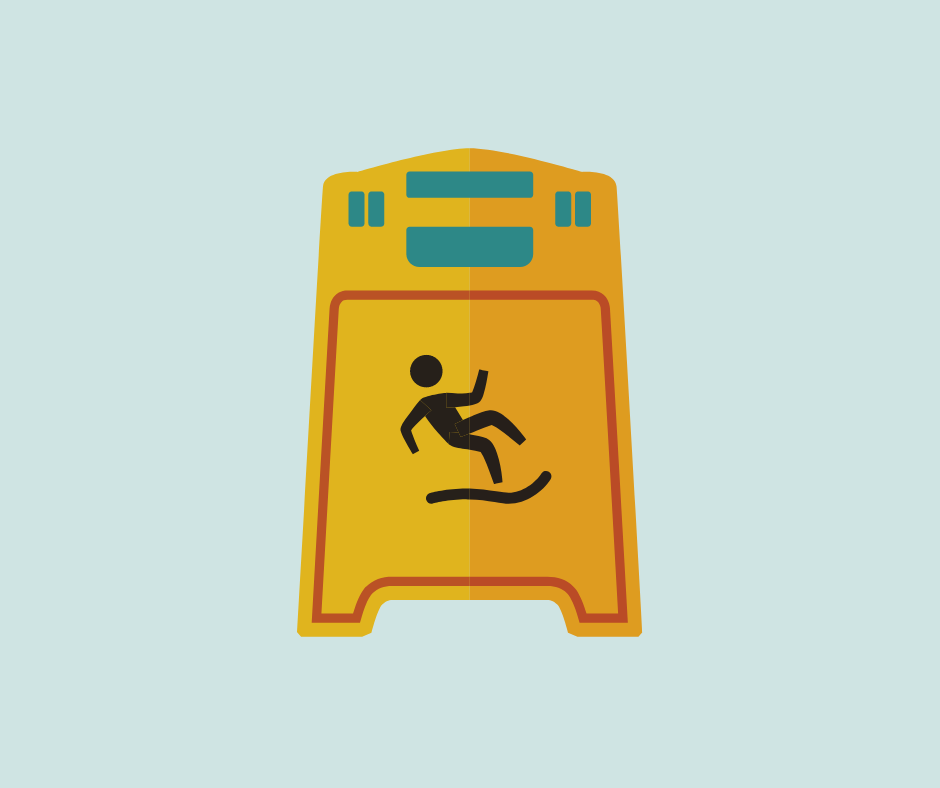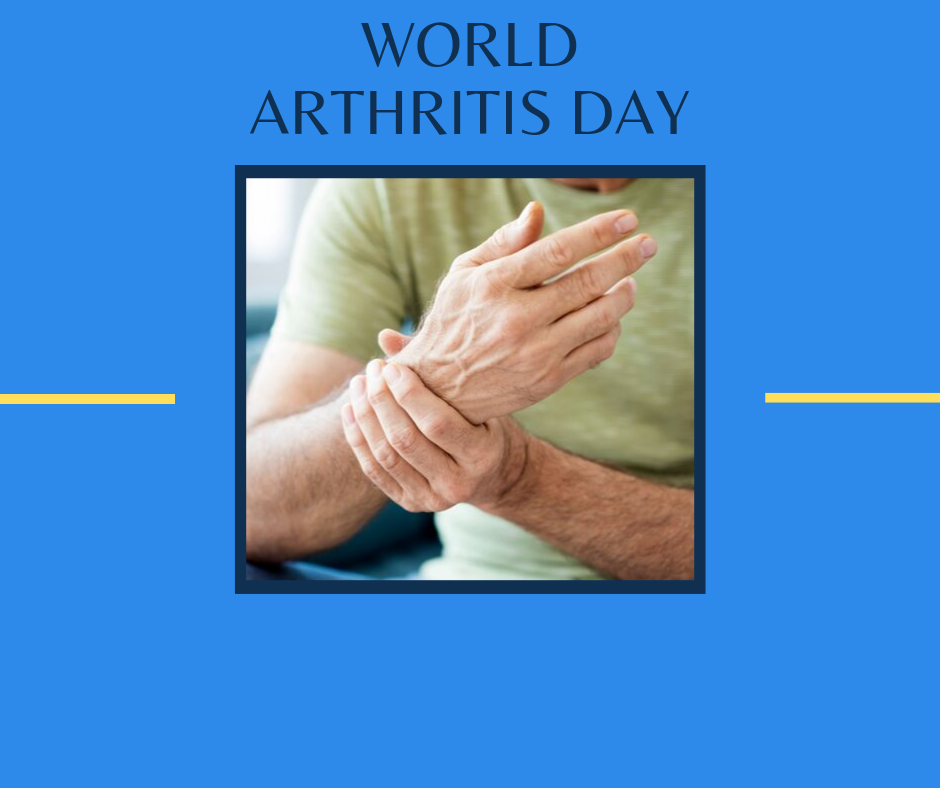News — Dementia

How You Can Help a Person with Dementia who Might be Lost
A common aspect of dementia is wandering. Wandering is when individuals with dementia might leave their home or their specific location without even realizing. Wandering can lead to individuals leaving their home and getting into a dangerous situation. For care partners, this can be a very scary situation.
If you are out in public and happen to find a person who you might assume has dementia, what should you do? Today, we share some tips on how to handle the situation and reconnect them with their loved ones or return to their home.
If you find a person who you believe has dementia who approaches you asking how they could get home or if they are looking for someone and you do not know how to handle the situation, consider doing these things:
1. Introduce yourself and ask them what their name is. If the individual is not able to express their name to you, compliment them on their bracelet if it's visible and take a look to see if it will provide you with any additional information. Never assume anyone has dementia, so treat them as anyone else should be treated. Ask them how they are doing and gain a sense of trust. Additionally, not every person with dementia is an older adult, persons can be diagnosed as early as 40 years old.

2. Individuals with dementia who live in retirement residences or long-term care typically wear a bracelet identifying who they are and which room they live in. Individuals who reside in their own home might also have a MedicAlert bracelet that provides identifying information on it along with an emergency responder number. This might help in identifying the individual and seeking help for them.
3. Ask them who they might be looking for and offer your phone so they can call them. If they do not know the number, try doing a Reverse411 based on their name and find their phone number.
4. If they seem panicked and frustrated, offer them with some calm, reassuring words, and offer to help them get to where they need to be. Be friendly, non-judgmental, and avoid arguing. If a person does become aggressive, keep yourself safe and offer the help that you feel comfortable with providing.
5. If they cannot get a hold of their loved one, phone the police and inquire if there have been any calls about this person's whereabouts. Do not offer to drive the person to their home, it is best to try to contact their family members and authorities before leaving a location.

6. The authorities can meet you and help the individual return home or back to their loved ones. Remain a friend in this moment and reassure them while waiting for the authorities. Spark a conversation about something off-topic to help take their mind off of the overwhelming situation.
7. Wait for the police or relatives to meet the person at the location and make sure they are in good hands. Pat yourself on the back for helping this person return to their location or back with their loved ones safely. Your efforts will be very much appreciated.

Preparing for Hospice Care
Are you starting to notice your loved ones' health is declining? This might mean it's time to think about hospice care. Today we share some strategies to prepare for this next transition.
November is Osteoporosis Month!
What is Osteoporosis?
Osteoporosis is a disease in which individual's present low bone mass and their bone tissue deteriorates. Ultimately, this increases the risk of fractures to the bones, with the most common being hip, spine, wrist, and shoulder.
Who is Affected?
Canadians are most often affected over the age of 50, however osteoporosis can affect anyone. Approximately two million Canadians are diagnosed with osteoporosis. 1 in 3 women and 1 in 5 men will experience a fracture due to their osteoporosis.
What Treatment is Available?
There is currently no cure for osteoporosis but treatment options are available to help reduce the loss of bone mass and the risk of fractures. The treatment options that exist are typically medications and individuals can speak to their doctors about finding what will work best for them.
Another important role in the treatment process is to maintain a healthy level of vitamin D and calcium within your diet. This will help to maintain healthy bones and should be done proactively throughout your life to reduce the risk of osteoporosis.
How can you Support People with Osteoporosis?
Be a person of support for a loved one with osteoporosis. Many individuals do not know they have osteoporosis because it is quite asymptomatic prior to a fracture. Be a source of encouragement for your loved one and support them if they experience a fracture. Encourage them to eat a healthy diet rich in Vitamin D and Calcium, and do so yourself. Participate in activities together that are safe for both of you. Join a support group if you are seeking more help or advice from others or need someone to lean on. There are many resources available through Osteoporosis Canada.
Osteoporosis and Dementia
Research has found that osteoporosis and dementia are more prevalent in women. As such, it is important to stay informed of the risk of osteoporosis. If you are a care partner of a person living with dementia, ensure they continue getting the right nutrients. If you begin to think their bones are not as strong as they used to be or have experienced a fracture, it's important to speak with your doctor to have them tested for osteoporosis. Stay aware, informed, and know the risks involved. This will help to make the transition easier and to maintain your loved one's overall health.
What do you do to support people living with osteoporosis? Share with us in the comments below!
References
Osteoporosis Canada (2019). What is osteoporosis? Retrieved from https://osteoporosis.ca/about-the-disease/what-is-osteoporosis/
Osteoporosis Canada (2019). Treatment. Retrieved from https://osteoporosis.ca/about-the-disease/treatment/

Celebrating Digital Health Week
This week, November 11-17, is Digital Health Week! The Canadian health care system continues to transform due to technological advances. This means that individuals are now able to access their results, attend appointments easier and virtually, and for doctors to access patient information more efficiently. Today we touch on how making this shift to digital health will offer more opportunities for the health care system as well as for individuals.
Digital health includes using technology to improve health care and offer more efficient, effective services for individuals. Digital health can be confidently shared amongst healthcare practitioners and clinics. It helps to keep track of an individual's health care and data without the hassle of paperwork. A client's healthcare record can be easily accessed and test results can be viewed much faster, meaning improved care for individuals.
For individuals living with dementia, this might help to transfer this information from memory clinics to their general practitioner as well as monitor cognition over time. As many individuals see a variety of doctors for their dementia diagnosis, it allows practitioners with faster results and an easier look into the individual's file.
While this process is still transforming, some clinics have taken the leap to shift to digital health records to keep track of their files.
What are your thoughts on digital health? Share with us in the comments below!
References
Canada Health Infoway (2019). What is digital health? Retrieved from https://infoway-inforoute.ca/en/what-we-do/benefits-of-digital-health/what-is-digital-health

Caring from a Distance
Are you a family member, friend, or care partner who is caring for a loved one with dementia from afar? Do you find it challenging to stay in touch with your loved one and offer your care remotely? This post is just for you.
Tips for Preventing Falls
Approximately 20-30% of Canadians over the age of 65 fall each year. Many of these falls can be prevented by taking simple steps to ensure safety. We share tips for preventing falls.
Reduce Obstacles around your Home
The most preventable method to reduce the risk of falling is to clean up obstacles around your home that may increase the risk of tripping or slipping. For example, tidy up any clutter around your house and keep it away from your walking paths. Remove any rugs around your home that might be easily tripped over or secure them to the floor. A fun way to help declutter is to analyze your home with family members or friends and create a 'scavenger hunt' activity to identify any areas of concern.

Install Grab Bars or use Assistive Devices where Needed
Grab bars and assistive devices should be used for prevention, meaning it is a good idea to install them prior to any accidents occurring. For example, grab bars are easy to install near toilets, sinks, showers and bathtubs, or in your bedroom. They are a cost effective item that can be that extra support when you might need it most. If you begin noticing concerns moving throughout your home, think about using an assistive device, such as a cane or walker. Speak to your doctor about what you are experiencing and what they recommend for you. There are many resources available to help cover the costs of assistive devices, inquire about these options prior to purchasing a brand new item.
Practice Balance Exercises
If you are willing and able, balance exercises are a great way to prevent falls and to maintain your physical health. Make an appointment with a physical therapist to learn some new balance exercises that you can implement throughout your day. These simple exercises can be carried out anywhere and are a great way to start your day.
Wear Proper Footwear
Purchase a supportive, non-slip shoe that will help to reduce the chances of falling. Even if you are heading out the door to quickly grab something, always ensure you are wearing proper footwear. Investing in a good pair of shoes is definitely worth it and helps keep you safe.

Ensure Proper Lighting throughout your Home
With the change of seasons, there is also a change in sunlight. Setup your home so that there is adequate lighting and if you feel it is difficult to see at times, install more lamps throughout your home. LED lights are much brighter, last longer, and are much more efficient. Consider installing LED lights in your home. Additionally, leave a light on when you go to bed. In the case nature calls overnight, this way you will have light to help guide you. Another way to help light your home is through the use of nightlights or lights for your outlets. Adequate lighting in your home is important not to trip over anything and to see where you are going.

Place Non-Slip Mat in the Shower or Bathtub
This is a great installation no matter your age! Non-slip mats help to protect us when getting into and out of the shower or bathtub and provide an extra cushion throughout. They are a great safety feature to install and are relatively low in cost.
Maintain a Healthy Diet and Stay Hydrated
Individuals who might not be getting all of their nutrients or are dehydrated often feel faint or dizzy. A way to avoid these feelings especially with age is to maintain a healthy diet and to stay hydrated. Ensure you are getting the proper nutrients you need and keep an eye on your sugar levels and your blood pressure.

Recognize any Side Effects from Medications
If you recently started a new medication and notice feelings of faintness or dizziness, reach out to your doctor and express these side effects. They can help to mitigate these side effects or change your medication so that you have a lower risk of falling.
Learn how to Fall Safely
Lastly, if you ever encounter a fall, it is important to know how to fall safely to reduce the risk of injury. Speak with your doctor or physiotherapist on tips to falling properly and safely. These most often include staying in a bent position, protecting your head, and positioning your body in a way that will lead to the least amount of injuries. Do not be afraid of falling but rather know how to fall and prevent injuries before they happen.

What do you do to prevent falls? Share with us in the comments below!
References
Government of Canada (2014, April 10). Seniors' Falls in Canada: Second Report. Retrieved from https://www.canada.ca/en/public-health/services/health-promotion/aging-seniors/publications/publications-general-public/seniors-falls-canada-second-report.html#s1

Discussing Dementia: An Academic Perspective
Today on our blog, we are joined by Dr. Kimberly Lopez from the University of Waterloo. She shares her academic perspective on dementia and how she approaches dementia in research.
Dementia and Depression
Depression is defined as lower mood, sadness, loss of interest and enjoyment in things, and a reduction in energy over the course of at least two weeks. Many persons experience depression or periods of depression over their lifetime. In fact, approximately 40-50% of individuals living with dementia experience depression at some point in their journey. Therefore it is important to recognize the symptoms of depression to better support and care for your loved one or relative with dementia.
The symptoms of depression are quite similar to those in dementia, including loss of interest, decreased mood, difficulties sleeping, an increase in confusion, and loss of appetite. However, this does not mean that the symptoms are the same and that persons living with dementia also have to live with depression for the rest of their lives. There are ways to help mitigate depression and cope with the diagnosis once you recognize the symptoms. If you begin to notice any of these symptoms or an increase in these symptoms, it is important to speak with your doctor and explore resources that will help your loved one.

Depression might arise due to a recent diagnosis of dementia, social isolation from activities your loved one previously participated in, embarrassment, increased fatigue, or side effects from prescribed medications. As a care partner, it is important to support your loved one and understand what they are going through. Encourage participation in new activities, develop a new routine, and know their limits. In doing so, this will not only better cope with feelings of depression but also help to reduce some of the symptoms associated with dementia. Individuals living with dementia should continue to participate in social and physical activities to remain cognitively stimulated and physically healthy. Physical activity, even a short walk in a nature setting, can increase endorphins, ultimately boosting a person's mood. This is not only beneficial for a person living with dementia, but also for care partners to help reduce stress.

While depression and dementia are difficult topics to approach in conversation, it is important to seek help earlier rather than later to gain support and find ways to cope. Simply asking how your loved one is really feeling and having a meaningful conversation with them might help to start the discussion on depression and dementia. Encourage individuals to share with you and support them in ways that they want to be supported. Persons will not accept help if they do not believe they need it. Be caring, kind, and understanding and do not be afraid to start the conversation.
References
Alzheimer Society of Canada. (2017, November 8). Depression. Retrieved from https://alzheimer.ca/en/Home/Living-with-dementia/Understanding-behaviour/Depression
heretohelp. (2013). Mental Health. Retrieved from https://www.heretohelp.bc.ca/infosheet/seniors-and-depression-the%20difference-between-depression-and-dementia
Muliyala, K. P., & Varghese, M. (2010). The complex relationship between depression and dementia. Annals of Indian Academy of Neurology, 13(2), S69-S73.
World Health Organization. (1992). The ICD-10 classification of mental and behavioural disorders: Clinical descriptions and diagnostic guidelines. Geneva: World Health Organization.

Autumn Activities
As seasons change, there are opportunities to participate in new things! If you're a care partner of someone living with dementia, you might be looking for activities to participate in. We share some activities for you to do to enjoy this beautiful time of year.
Refusing to Bathe
Many care partners face the challenge of encouraging and maintaining their loved ones' personal hygiene. Unfortunately this can be a difficult discussion to have and it is important to approach the subject in a kind, caring way. It is important to maintain personal hygiene to maintain one's overall health.
Many persons with dementia might refuse to wash as they are unaware of their personal hygiene situation or may have forgotten that they have not showered. Some individuals might become frustrated or confused when told to bathe. It is important not to use a negative tone when approaching this conversation.
Approach bathing in a positive way
This is much easier said than done. Approach bathing or showering in a positive way and avoid making your loved one feel embarrassed. Encourage them to bathe in a kind manner as opposed to forcing them to bathe or raising your voice. Kindly guide them to the bathroom with all items prepared and encourage them to wash.

Lead by example
Another way to approach bathing is by demonstration. If you encourage them to bathe or shower as you are going to or have already done so, this will make the task feel less daunting. Individuals with dementia might need to see that others are doing it too before they can do it. One way to approach this is to say, "I just got out of the shower, do you want to shower now? It's available."
Involve them in laundry and hygiene tasks
Ask them for help. Persons with dementia still want to feel that they are contributing and what better way then to participate in chores together. Even if they are not as helpful as you would like, encourage them to carry some items to the laundry room or to change into clean clothes after they shower. Ask them if they'd like to help gathering up the dirty clothes and ask if they need to put on a fresh outfit, then lead into having a shower or bath.

Ensure an accessible setup
Visuospatial skills are affected when a person has been diagnosed with dementia. Sometimes we might not notice this, but if your loved one has to step over the edge of the shower or there is a bathmat outside of the shower, this might look as though it is a much larger step and be quite daunting for persons with dementia. If individuals require more assistance, think about installing grab bars or seats in your shower to make it more accessible. If persons with dementia feel the shower setup is not safe for them to use, they simply won't use it.
Offer incentives
Purchase a new shower product for your bathroom. Ask your loved one with dementia if they have seen a new product you purchased and lead them into the bathroom. While in the bathroom, ask if they would like to try it out and bathe or shower. Sometimes this draws their attention to a new item and individuals might want to shower to use this. Another incentive is to setup a radio on your bathroom counter and play their favourite music. This might help to ease their mind and put them in a happier mood. As a result, they might be more willing to shower alongside their favourite song.

Schedule baths and showers on your daily calendar
Hang a calendar in your bathroom or in another room in the house. Write down on the calendar the days you plan on showering and encourage your loved one to have their name on the calendar too. This creates a reference point for persons with dementia as you encourage them to shower on Tuesday, you can look to the calendar and hold them accountable. Developing a routine is important for persons with dementia and makes tasks seem familiar to them, in which they will most likely continue to follow this routine without hesitations.

Bathe prior to events
If you and your loved one with dementia attend a weekly social group, run errands together, or visit family members, encourage them to bathe prior to these events. Approach this by getting ready together and reminding them that they want to look fresh for a new day. Choose an outfit for them to wear that makes them feel comfortable and confident. Encourage them to change into the outfit once they have bathed. Hold them accountable for this and do not leave the house until they have gotten ready.
Consider hiring help
If you have tried many of these strategies, or your loved one with dementia might need more assistance bathing than you can provide, it might be time to consider hiring help. There are many home care companies who bring employees into the home, build a relationship, and help to bathe your loved one with dementia if they need further assistance. This also offers care partners with an hour or two to get caught up with things around the house or to take a break. Reach out to the Alzheimer Society, home care companies or your local LHIN and see what options there are for you and your loved one.
Helpful Resources:
Ontario LHINs: http://www.lhins.on.ca
Alzheimer Society of Ontario: https://alzheimer.ca/en/on
Community Support Connections: https://communitysupportconnections.org/services/care-coordination/
Home Care Assistance: https://homecareassistance.com

World Arthritis Day
Today is World Arthritis Day. We discuss what arthritis is, how individuals can manage their symptoms, and strategies for living with dementia and arthritis.
What is arthritis?
Arthritis is a term that describes joint inflammation, leading to redness, swelling, pain, and stiffness. Arthritis can affect any joint in the body, but most often impacts the hips, knees, or spine. Arthritis is a chronic condition, meaning that individuals are affected over their lifetime and it is through treatment options that individuals with arthritis can continue to live well.
What are the symptoms of arthritis?
The symptoms of arthritis can be mild or severe, depending on each individual person. Typical symptoms of arthritis include chronic pain, fatigue, limited mobility, decrease in mood, and can affect individuals in episodes, meaning they are experiencing symptoms so much that it impacts their quality of life.
What are some treatment options for arthritis?
While there are many different types of arthritis and it affects individuals so differently, it's important to speak with your doctor and start a treatment plan for arthritis. Some treatment options include medications, surgery, physical activity, physical therapy, joint protection, hot and cold therapy, and many others. It's important to be aware of your pain and contact your doctor if you experience any new symptoms.
What are some ways to manage arthritis? For people with dementia?
For individuals with arthritis, it is possible to continue to live well. It is important to take charge of your health and know your limits. Many individuals find new activities that help to ease their pain and continue their engagement in their communities. It's important to find strategies that work for you and to recognize your pain and stop to prevent further pain. During daily tasks, it's essential to take breaks, stretch, and rest when necessary.
Arthritis for persons living with dementia might make a diagnosis more complex. However, if persons are diagnosed with arthritis prior to their dementia diagnosis, having a treatment plan is essential to continue managing arthritis with dementia. For individuals who might develop arthritis after a dementia diagnosis, as a care partner it is important to recognize the symptoms of arthritis and notice if a person with dementia is experiencing pain during certain situations. If they begin to hold their wrist, back, or knees during activities, schedule a doctors appointment and inform your doctor of these symptoms. While some persons living with dementia will be able to express their pain, others who are further along their journey might not be able to. Creating a treatment plan with your doctor can help to find a schedule and treatment regimen that works to help prevent pain or further worsen an arthritis diagnosis. It's essential to ask your loved one with dementia where they are experiencing pain and help them to find a plan that helps to ease their pain.
How can you better support people with arthritis?
As a way to better support people who have arthritis, it's important to recognize the signs and not encourage individuals to overdo it on certain activities. Help individuals to find the right treatment options for them and support them through this plan. Be a supportive friend, family member, or neighbour and offer them with help where necessary. For example, is it more difficult for them to garden, cook, or do other activities? Offer them with some extra help or bring them a meal once in a while. Offer to engage in new activities with them, such as swimming or light walking. Living well with arthritis is possible and finding solutions to help manage arthritis and pain can help individuals to do so. For persons living with arthritis and dementia, there are more complexities involved, but the same thing remains the same, be there for your friend, relative, or neighbour and support them as best as you can.


